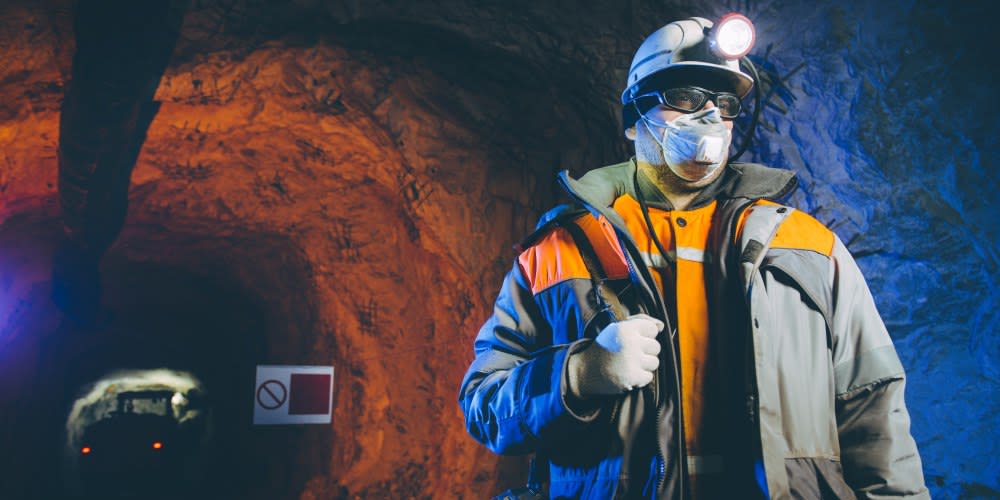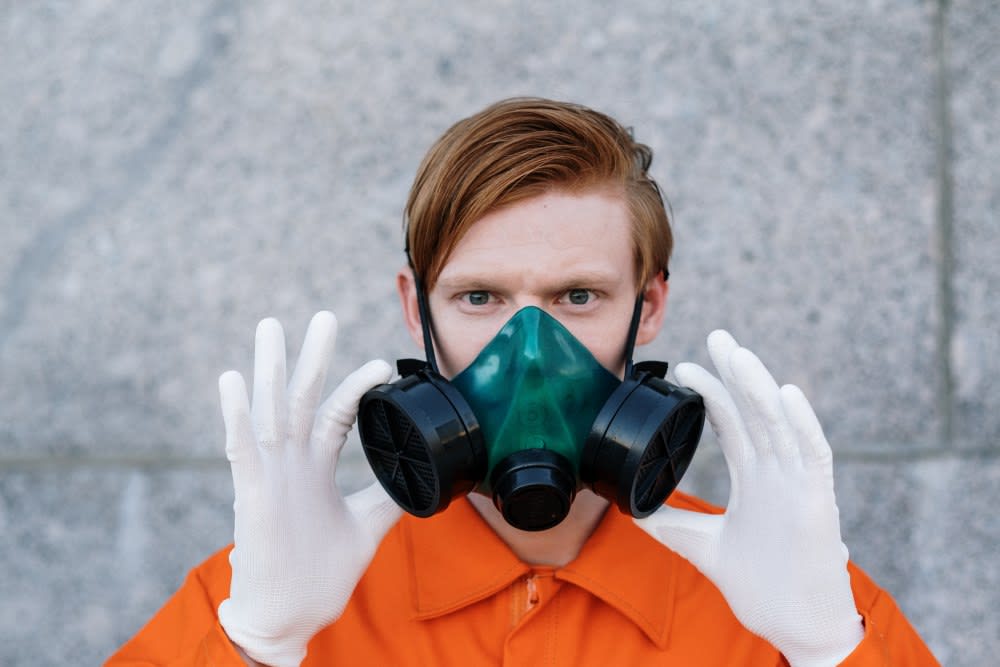- Published 22 Feb 2024
- Last Modified 6 Mar 2024
- 5 min
Selecting the Right Respiratory Protective Equipment for Mining Environments
Explore our guide on selecting the right respiratory personal protection equipment (PPE) for mining for safe activities underground.

In the mining industry, respiratory protection takes centre stage, especially when airborne hazards, such as dust, gases, and vapours, are part of daily operations. Proper personal protective equipment (PPE), like high-quality respirator masks from reliable suppliers, is essential for their health and safety.

Understanding the Risks: Common Airborne Threats in Australian Mining
The environment underground or even on the surface can expose workers to a variety of airborne dangers. These include:
Particulate Matter
In mining operations, activities like drilling, blasting, and ore processing release inhalable dust, including silica, coal dust, and metal oxides. These particulates pose significant health risks, leading to conditions like silicosis, pneumoconiosis, and lung cancer. Since 1984, there have been 197 pneumoconiosis cases, 437 mine dust lung disease (MDLD) cases, and 1,520 abnormal chest x-ray results, 70 of which detected diseases. A study by Cancer Council Queensland found the prevalence of coal mine dust lung disease (CMDLD) in Queensland to be estimated at 2.1 cases per 1,000 coal mine workers in 2019/20. A more recent study in the International Archives of Occupational and Environmental Health revealed that phlegm and cough were more common among minors when exposed to high inhalable and respirable dust levels. About 6.3% of these miners reported possible airway obstruction, plus impaired lung function due to inhalable dust.
Gaseous Hazards
Mines can also contain hazardous gases like methane, carbon monoxide, and radon, depending on the minerals being extracted. Exposure to these gases can lead to asphyxiation, poisoning, and neurological damage. Radioactive gases, in particular, have previously been linked to deaths due to lung cancer among underground workers. The severity of these gases led state authorities to recommend exposure standards while recognising that the margin of safety is still small, underscoring the importance of proper respiratory protective equipment and safety protocols.
Low Oxygen Environments
In confined spaces or poorly ventilated areas of mines, the risk of oxygen deficiency is a serious concern. Low oxygen levels can cause dizziness, which makes operating machinery or using mining hand tools extremely dangerous. Miners can also faint, and in severe cases, low oxygen can lead to death.
Navigating the Options: Types of Respirator Masks Available

Choosing the right type of mining PPE is crucial. The selection depends on the specific hazards present and the level of exposure miners face. Respirator masks play a pivotal role in this selection, offering varying levels of protection against airborne contaminants. These masks are designed to filter out harmful particles, providing a critical barrier between miners and the respiratory hazards they encounter daily.
It’s important to note that the type of mask to use must be informed by key factors, such as:
- Hazard Assessment: Conducting a thorough hazard assessment is key to identifying specific risks, with Australian regulations guiding respirator selection based on identified hazard levels.
- Exposure Duration: The length of exposure dictates the protection level needed, with prolonged exposure requiring more robust respiratory equipment.
- Comfort and Fit: Essential for effective protection, comfort and fit can be ensured through fit testing and choosing respirators with adjustable features and comfortable materials.
Full-Face Respirator Masks
Full-face masks offer comprehensive respiratory protection by covering the eyes, nose, and mouth, shielding miners from multiple hazards simultaneously. They are particularly suitable for high-risk environments where miners are exposed to concentrated contaminants.
Half-Face Respirator Masks
Half-face masks, covering the nose and mouth, are designed for moderate exposure levels and specific dust types, such as coal dust. They are a common choice in mining environments where full-face coverage isn't necessary. However, the effectiveness of half-face masks heavily relies on proper fit and selection. It's crucial to choose a respirator mask that seals well to the face to ensure adequate protection against airborne particles.
Disposable Respirator Masks
For low-risk, short-term tasks with minimal dust exposure, disposable respirators are often sufficient. These respirators are designed for specific hazards and should be selected accordingly. While they offer convenience and ease of use, it's important to understand their limitations. Disposable respirators need to be replaced regularly to maintain their effectiveness and should not be used in environments with high contaminant concentrations or for extended periods.
Beyond the Equipment: Enhancing Respiratory Protection Through Training and Maintenance
Effective respiratory protection in mining extends beyond just having the right equipment; it also involves proper training and maintenance to ensure optimal safety.
Fit Testing and Training
Fit testing for respirators is mandatory in Australia, as per Safe Work Australia regulations. Regular training on proper use, cleaning, storage, and inspection is crucial for maintaining respiratory health and safety.
Maintenance and Inspection
Regular cleaning and disinfection of respirator masks are essential to prevent mould and bacterial growth. Routine inspections are needed to check for damage or wear, with prompt replacement of damaged or expired respirators to maintain protection.
Emergency Preparedness
Training miners in emergency response procedures, including the correct use of emergency respiratory protective equipment, is vital for ensuring quick and effective action in unexpected situations.
Popular Mining PPE Brands
Alpha Solway
Alpha Solway, a British-based leader in disposable respirators and protective clothing, prioritises workforce safety with products designed for user acceptance, compliance, and productivity.
Related links
- Mining Industry Solutions: Personal Protective Equipment (PPE) for Mining
- Complete Guide on Essential Mining PPE for Health and Safety
- YOUR SAFETY EXPERTS
- Ensuring Personal Protection in Industrial Environments
- Safety in Mining: Choosing the Right Hand Tools for Hazardous Environments
- PPE: A Complete Guide
- Facom Maintenance/Personal Equipment Red Latex Mechanical...
- The Role of Thermal Overload Relays in Mining Safety